OUTCROP
Newsletter of the Rocky Mountain Association of Geologists

Platinum Sponsor







SUMMIT SPONSORS



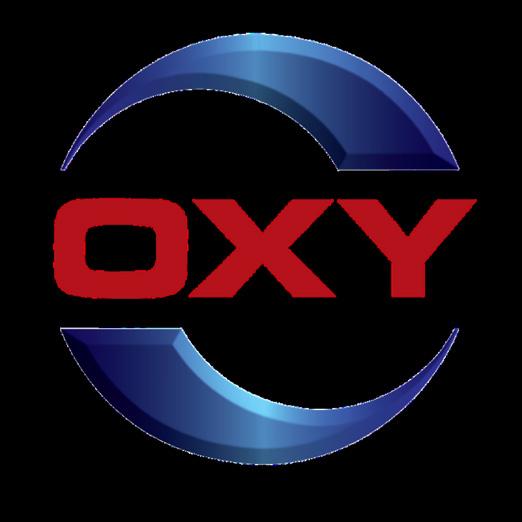













Newsletter of the Rocky Mountain Association of Geologists
730 17th Street, B1, Denver, CO 80202 • 720-672-9898
The Rocky Mountain Association of Geologists (RMAG) is a nonprofit organization whose purposes are to promote interest in geology and allied sciences and their practical application, to foster scientific research and to encourage fellowship and cooperation among its members. The Outcrop is a monthly publication of the RMAG.
PRESIDENT Ben Burke bburke158@gmail.com
PRESIDENT-ELECT Mike Tischer mtischer@gmail.com
1st VICE PRESIDENT Ronald L. Parker parkero@gmail.com
1st VICE PRESIDENT-ELECT Lisa Wolff lwolff@bayless-cos.com
2nd VICE PRESIDENT Matt Bauer matthew.w.bauer.pg@gmail.com
2nd VICE PRESIDENT-ELECT
Jason Eleson jasoneleson3@gmail.com
SECRETARY Sandra Labrum slabrum@slb.com
TREASURER
Anna Phelps aphelps@sm-energy.com
TREASURER ELECT
Holly Lindsey holly@energyfunders.com
COUNSELOR
Steve Crouch scrouch@whiteeagleexploration.com
Rates and sizes can be found on page 42. Advertising rates apply to either black and white or color ads. Submit color ads in RGB color to be compatible with web format. Borders are recommended for advertisements that comprise less than one half page. Digital files must be PC compatible submitted in png, jpg, tif, pdf or eps formats at a minimum of 300 dpi. If you have any questions, please call the RMAG office at 720-672-9898.
Ad copy, signed contract and payment must be received before advertising insertion. Contact the RMAG office for details.
DEADLINES: Ad submissions are the 1st of every month for the following month’s publication.
The Outcrop is a monthly publication of the Rocky Mountain Association of Geologists
DESIGN/LAYOUT: Nate Silva | nate@nate-silva.com
EXECUTIVE DIRECTOR Bridget Crowther bcrowther@rmag.org
OPERATIONS ASSISTANT
Kimberly Burke kbure@rmag.org
LEAD EDITOR Nate LaFontaine nlafontaine@sm-energy.com
CONTRIBUTING EDITORS
Elijah Adeniyi elijahadeniyi@montana.edu
Marlee Cloos marlee.cloos@bpx.com
Danielle Robinson danielle.robinson@dvn.com
WEDNESDAY NOON LUNCHEON RESERVATIONS
RMAG Office: 720-672-9898
Fax: 323-352-0046 staff@rmag.org or www.rmag.org
April 2 1
June 4 - 8
View the stratigraphy and sedimentology of the Niobrara/Fort Hays Formation at the CEMEX Quarry in Lyons. The quarry is undergoing reclamation, but many quarry faces are still accessible.
5 days/4 nights on the Lower San Juan with Fort Lewis on the Water Float through goosenecks, visit dramatic geological and archaeological sites Registration open!
June 2 42 5
July 1 5
Sept 9
On this unique field trip you'll see more impact craters in one day than anywhere else on Earth. Led by Kent Sundell, geology instructor at Casper College, who has studied and written extensively on this crater field, the Douglas Impact Site
A 2+ mile walking tour of some of downtown Denver’s iconic stone buildings, many of which are constructed with rock from Colorado quarries. See Yule Marble, Pike’s Peak and S. Beaver Creek Granites, and more! Refreshment stop is scheduled
Tour of the historic Beulah Quarry, source of Colorado Capitol's most unique building stone, led by Quarry owner Ken Balleweg. Also included is a visit to the Steelworks Center of the West in Pueblo.
Sept 3 0
Grab your bike and join Dr Donna Anderson on a tour of the geology of the Golden area Trip is 9 miles on a bike path
Registration for trips will generally open one month before the trip date. Check www.rmag.org for updates and details.


Dates subject to change. View website for additional info.

2023 RMAG Summit Sponsorship Packet
Lead Story: RMAG North American Helium Conference
Mineral Of The Quarter: Sphalerite
RMAG April 2023 Board of Directors Meeting
President’s Letter
Hybrid Lunch Talk: Ken Balleweg
Hybrid Lunch Talk: Emilie Gentry
Member Corner: Lisa Stright, PhD Welcome New RMAG
13
19
25 On-the-Rocks: Paleozoic Impact Crater Field

26 RMAG Foundation: Awards for Excellence in Earth Sciences

27 North American Helium Conference Sponsors
28 On the Rocks: Behind the Scenes Tour, Denver Museum of Nature and Science
38 WANTED: Colorado Rocks!

Long’s Peak from Trail Ridge Road, on the last day of Summer, 2005. Rocky Mountain National Park, Colorado
—Ronald L. Parker
Newsletter of the Rocky Mountain Association of Geologists


October 20, 2022
Geoscience Community:
We greatly appreciate every Summit Sponsor and Event Sponsor that has contributed to RMAG over the last year. We could not exist without your support.

In RMAG’s 100th year we have emerged from the global pandemic to return to many of RMAG’s beloved programs, and we created new programing to meet the needs of our members and the greater geoscience community. Monthly luncheons returned to in-person, with the addition live streaming. The 2022 Golf Tournament sold out bringing over 100 golfers out for a great afternoon together. The Powder River Basin Symposium offered two days of talks and core viewing to a packed room with attendees from across the country. Members young and old celebrated RMAG’s past and future at the 100th Anniversary Party. But that’s not all, the Diversity and Inclusion Committee in conjunction with Education Outreach attended numerous community outreach events from Girl Scout Days at Dinosaur Ridge to the Juneteenth Festival, sharing our members love of the geosciences with the next generation. Short courses were held both in person and online creating educational opportunities for members in Denver and across the country.
2023 brings new opportunities for RMAG. Your sponsorship dollars will help RMAG bring to fruition the 2023 North American Helium Symposium, an exciting Field Trip season, and a dynamic list of luncheon speakers on topics ranging from the state of the industry to the Williston Basin to geothermal energy storage. These dollars will allow RMAG Members to impact the next generation at outreach events throughout the community and provide opportunities for the geoscience community to connect and build their network. We’re looking forward to seeing everyone on a more regular basis.
Your sponsorship dollars support our excellent publications including the monthly Outcrop newsletter and the quarterly Mountain Geologist journal We recognize your financial commitment with in-person signage, website and publication advertising, as well and social media posts before each online event. With a LinkedIn group of almost 3000 members, we make our sponsors visible to the geoscience community for both virtual and in person events.
Thank you to those who are already a Summit Sponsor, we look forward to your continued support in 2023. If you are not already a sponsor, please look at the many complementary benefits included with the sponsorship levels. If our annual sponsorships don't make sense for your company, or you wish to sponsor something specific, ask about our single event sponsorship opportunities. Please feel free to contact our staff with questions by email: bcrowther@rmag.org or by phone at 720-672-9898 ext. 102.
We and the staff of RMAG thank you all for your continued support and look forward to seeing you in person this year.
 Ben Burke
Bridget Crowther 2023 RMAG President RMAG Executive Director
Ben Burke
Bridget Crowther 2023 RMAG President RMAG Executive Director
months of Outcrop advertising: To receive 12 full months, company logos and ad art must be received no later than the 20th of the month in which you register.
Points are
u l
and can be used for any social event. For example, 1 point means 1 golfer, or 1 registration for Rockbusters. *2 points can be used for a golf hole if that makes more sense for your company.
all event tickets please contact the RMAG office at staff@rmag.org to use your spots.

Payment Options
All sponsor benefits event tickets follow RMAG event registration deadlines. All benefits end 12 months after registration.
Platinum Sponsor
Gold Sponsor
Silver Sponsor
Summit Sponsorship benefit term is for 12 months! Specify type of payment on signed form, and send logo and advertisements to staff@rmag.org
Company:
Company Representative:
Address:
City: State: Zip Code:
Phone: Email:
Payment Method: Credit Card ACH Check
Credit Card Information:
Name as it appears on Credit Card:
Credit Card #:
Expiration Date:
Select Card: AMEX Mastercard VISA Discover Security Code:
Signature:
ACH: contact the RMAG office at staff@rmag.org for directions.
Mail Checks payable to RMAG:
Rocky Mountain Association of Geologists (RMAG)


730 17th Street, B1
Denver, CO 80202
RMAG events are subject to change. Cancellation or rescheduling of events does not give the sponsor the right to refund. Summit Sponsors will receive benefits at any new events added into the RMAG schedule.
Thank you for your generous support!
P: (720)672-9898
staff@rmag.org
www.rmag.org
730 17th Street, B1
Denver, CO 80202
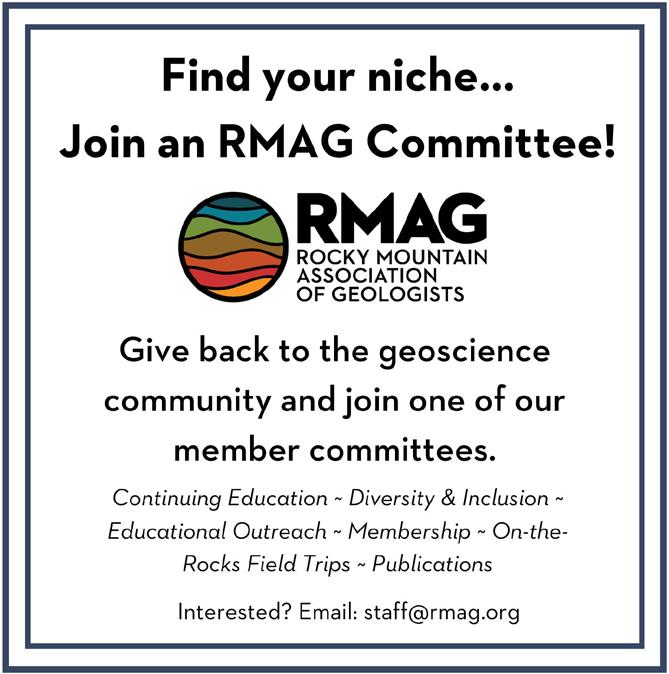 By Sandra Labrum, Secretary slabrum@slb.com
By Sandra Labrum, Secretary slabrum@slb.com
Hi everyone! As we are gearing up to start field season, I hope you are leaving some space in your packed summer for the great field trips we have planned this year. The calendar of trips is on the website and you should register today as some of the trips are already starting to sell out!
The April Board of Directors meeting took place April 19th, 2023, at 4pm online. All board members expect one were present. The Finance committee started off the meeting with an overview of the financial standing in March. March was an outstanding month due to the huge success of the Helium symposium!
The Continuing Education Committee is continuing to host hybrid lunches with great success. Ken Belleweg will be presenting in May, Paleokarst Origin & Mining History of the Beulah Marble Deposit. The Membership committee is announcing the opening of the mentorship program soon so be sure to apply to be either a mentor or mentee. We are also continuing the RMAG Women’s

Group. The May coffee will be on May 2nd at Vibe Coffee sponsored by Columbine Corporation. The Membership Committee also started a monthly happy hour in April, so be sure to come in May! The Publications Committee is still hard at work making sure there is high quality content for both the Outcrop and the Mountain Geologist. The Educational Outreach committee has a full schedule of events for this year. Dinosaur Ridge Boy Scout days is May 13th. On the Rocks, has a full slate of great field trips planned this year. Registration is open for most so sign up today! Finally, Diversity and Inclusion committee has been hard at work bringing you member corners in each Outcrop as well as cohosting the women’s group coffee. The committee is also going to continue assisting with the youth programs for the Center on Colfax.
I hope you all have a fantastic May and enjoy this beautiful spring weather. Until next time!











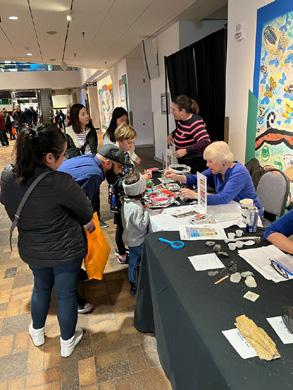


This month I am focusing on the intersections of space science and geology. One of the field trip highlights offered by your Association next month is a trip to the Douglas, Wyoming, Paleozoic meteorite crater field. This fascinating trip is a day of understanding impact structures in the Permian-Cretaceous age Casper Sandstone of the western Powder River Basin. The 40+ circular structures, some of which are confirmed impact craters based on the presence of shock quartz, have morphologies to suggest that the meteors blazed in from the southeast heading in a northwesterly direction. More details are available on rmag.org and registration is now open.
Astrochronology is another field of geology that is an important integration of Earth’s orbital dynamics with stratigraphy and the related paleoenvironmental, geochemical, and biogeochemical interpretations of the strata. The orbital dynamics in question are the three types of orbital variations identified by Mulutin Milanković in the early 20th century, precession, eccentricity, and obliquity. Work by Lochlair and Sageman (2008)1 and Sageman and others (2014) 2 determined and refined the astrochronology of the Niobrara formation based on Ar/Ar, Pb-U, from outcrop data from around the
Western Interior Seaway as well as Libsack 43-27 core and Angus Aristocrat 12-8 core, both drilled by EnCana in 2004. RMAG’s own Bill Drake, retiring executive editor of RMAG’s Mountain Geologist, examined the impacts on oil and gas resource variation in the related sequence stratigraphic framework datumed on these same Ar/Ar and Pb-U dates.3 The physical manifestations of these variations in orbital dynamics, the chalk and marl sequences of the Niobrara Formation, were on display for field trip participants for one last time last month at the Cemex Quarry near Lyons, Colorado led by Brown Hawkins and Dr. Steve Sonnenberg.
According the Colorado Space Coalition, Colorado has the second largest space economy in the United States as of 2021, with a variety of private and public entities doing some geoscience and plenty of engineering on a variety of solar system and deep-space projects and missions. Whether in asteroid mining, lunar resource mapping and mining, or solar system exploration, particularly Martian exploration, geoscience roles in all those facets will be critical in the coming years and decades.
As always, stay tuned to rmag.org for more technical content and field trip registration opportunities.
1: Locklair, R.E., and Sageman, B.B., 2008, Cyclostratigraphy of the Upper Cretaceous Niobrara Formation, Western Interior, U.S.A.: A Coniacian-Santonian orbital time- scale: Earth and Planetary Science Letters, v. 269, p. 540–553, doi:10.1016/j.epsl.2008.03.021.
2: 2014, Sageman et al., Integrating 40Ar/39Ar, U-Pb, and astronomical clocks in the Cretaceous Niobrara Formation, Western Interior Basin, USA, GSA Bulletin; July/August 2014; v. 126; no. 7/8; p. 956–973; doi:10.1130/B30929.1
3: Drake, William & Hawkins, Sarah. (2021). Sequence stratigraphy of the Niobrara Formation: Implications for age-constraining tectonic events and stratigraphic complexities in the Denver-Julesburg Basin, United States. AAPG Bulletin. 105. 1293-1328. 10.1306/12092019098.





ABOVE: RMAG President Benjamin Burke opened the North American Helium Conference

BELOW: Discussions continued during the breaks

was just one of the comments from the more than 300 attendees at the RMAG North American Helium Conference held March 22nd and 23rd. These high-energy two days were packed with speakers, exhibitors, prospects and discussions about all aspects of the helium industry. The exhibit/prospect hall was flanked by two conference halls where talks were presented.
The conference was organized by Jeff Aldrich and Mark Germinario as co-chairs with committee support from Steven Tedesco, Rob Diedrich, Ron Broadhead, Sean Brennan, Michele Bishop and Matthew Bauer. The idea grew from a few talks in a conference room to two full days in two concurrent sessions—41 talks and 4 keynote talks in all.
Throughout the conference all participants had time to visit the Exhibition Hall where there were 26 booths; six of them prospect booths and twenty exhibitors, some helium exploration companies and some with technologies pertinent to the helium industry. The booths were busy and word is that most of the prospects were sold.
RMAG achieved a great sponsorship response from the helium industry for this conference which helped keep the price of the registration down. Included were Diamond Sponsor Blue Star Helium, and Titanium Sponsors North American Helium, OneGeo.co, Pulsar Helium, and Sproule.
Attendees included representatives from US Department of Interior, DOC Office of Critical Minerals and Metals, USGS, universities such as Kentucky, Oxford, and MetroState, the geological surveys of Colorado, Wyoming, Utah, New Mexico, and Manitoba, BIA Division of Energy and Mineral Development, BIA, the Navajo Nation Oil and Gas Co., COGCC, the Denver Museum of Nature and Science as well as numerous independents, consultants and corporations. More than 160 entities from Canada, the US, Japan, England, South Africa, and more were represented.
Attendees learned that Helium-3 (3He) is cosmic and Helium-4 (4He) is common planetary helium. It is created as 8 non-radioactive Alpha daughter products of every uranium and thorium radioactive decay. 4He is primarily found associated with natural gas, nitrogen and CO2 in concentrations mostly under 1 mol%, sometimes in concentrations under 10 mol%
» CONTINUED ON PAGE 16
OF CONFERENCES!”
and is known in concentrations up to 26 mol%. Helium that is found without significant methane is known as “green helium”. Helium is separated from other gases using various methods and concentrated further using cryogenic methods. The helium market identifies “Crude Helium” (aka “lift gas”) as 50 to 90% helium, which is shipped, stored, sold for refining, used in balloons, etc. The final market product is “Grade A” (aka “5”) or 99.999% or higher helium and is used in medical equipment, space program, nuclear reactors, lasers, fiber optics, electronics, etc. Helium pricing is difficult to record since contracts are private. Several supply shortages have occurred in the past 10 years. The helium market is now experiencing shortage 4.1.
The full program with abstracts can be found here.
Benjamin Burke, RMAG President, gave the conference opening address and the first conference keynote address was presented by Phil Kornbluth who spoke about the outlook and opportunities in the helium market. The Big Picture opening morning session began with Sean Brennan reviewing the USGS assessment of known helium resources of the US, Tim
Rynott asked the question in his presentation about helium self-sufficiency of North America in the future and Jeff Aldrich reviewed regulations and valuation in the global markets. The remaining opening morning sessions featured Chris Ballentine of University of Oxford assessing helium potential in frontier basins, Gwen Brodsky, Aota Technical, reviewing Colorado’s regulatory system with implications for all regulatory systems and Nicholas Kernan, DOI Division of Minerals Evaluation, updating the attendees on valuation and future of the Federal Helium System.
An all-attendees buffet lunch was highlighted by a keynote talk from Steven Tedesco who outlined the qualities of an economic helium prospect.

Attendees then divided into two concurrent sessions organized by geographic region and topic. The Colorado Plateau Session covered the past present and future predictions for helium exploration in the Four Corners Area, the Rio Grande Rift, the Holbrook Basin, the Piceance Basin and the description of a helium migration model for the Colorado Plateau.
In the other room the concurrent first afternoon session included two sessions Midstream Logistics and Exploration: International. Transportation of
» CONTINUED ON PAGE 17
» CONTINUED FROM PAGE 16
natural gas containing helium, predictions for future helium transportation, modular helium purifiers used in Saskatchewan and raw gas processing strategies were featured in the first half of the afternoon. Exploration and commercialization of helium in South Africa, exploration for helium in Europe, and exploration strategy of targeting locations of impact craters as a critical element in helium accumulations finished the afternoon session.
Day one closed with a happy hour where attendees continued their discussions of the day.
The morning of the second day again featured two concurrent sessions. One titled Exploration: Canada and the other, Exploration: Southeast Colorado and More. Speakers presented information about the Canada provinces of Manitoba, Alberta, and Saskatchewan as well as Montana portions of the Western Canadian Basin, which have histories of helium exploration, discovery, and production. In the concurrent session next door, Exploration: Southeast Colorado and More, helium exploration plays, reservoir targets and characteristics, history of production, and associated gases in the Las Animas Arch area, eastern Colorado, Hugoton, New Mexico, and San Juan County
Utah were presented. Another all-attendees buffet lunch was served and followed by a keynote talk from Jeremy Jordan who described the challenges involved with processing and commercialization of helium projects.
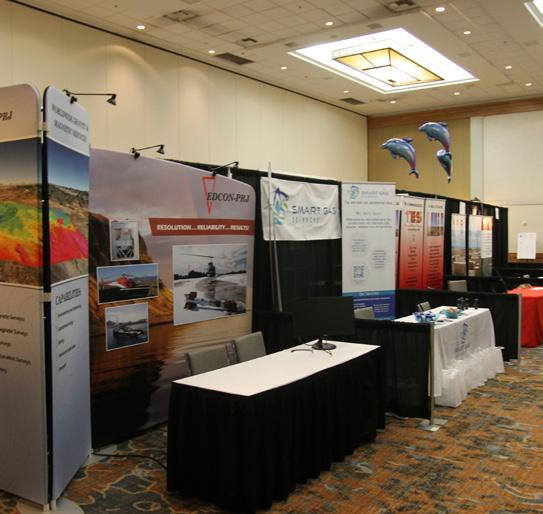
The afternoon of the second day included two concurrent sessions. In the Technologies and Remote Sensing session near-surface geochemical analysis was described as an exploration tool as well as developments in soil gas analysis. Evaluating the role of faulting in helium accumulations and helium resource analysis using wellsite mass spectrometry were two more of the talks. Next door, the Exploration: Northern USA session included examination of helium resources in the LaBarge Platform area, the Duluth Complex in Minnesota, the Rome Trough in Kentucky, and other areas targeting the Phanerozoic.

All participants came back into one room to hear from Gregg Peters for the closing keynote. He warned about the key aspects of helium off-take agreements. He offered advice to help avoid pitfalls and approaches to make agreements mutually beneficial.
A short wrap-up by Jeff Aldrich and a question and answer session with all of the keynote speakers together concluded the conference.
Speaker: Ken Balleweg

Date: May 3, 2023 | 12:00 pm - 1:00 pm
Presenter: Ken Balleweg
The Beulah Marble Quarry, located in the Wet Mountains of southern Colorado in western Pueblo County, was the source for the stunning pink and red banded marble wainscoting prominently displayed throughout the Colorado State Capitol building. The marble, also known as Colorado Rose Onyx and Beulah Red, is hosted by the Mississippian Leadville Limestone at the southernmost occurrence on the Front Range. Rather than being a true marble of metamorphic origin, it consists of elaborately patterned hematitic leisengang-banded limestone formed by a multi-stage paleokarst process. Highest quality marble occurs adjacent to dissolution features localized at the Leadville/Fountain Formation unconformity. Paleocaverns and sinkholes infilled with hematite-rich Fountain and probable Molas
Formation equivalent mudstones, arkosic sandstones, and karst breccias are close ly spatially related to the marble deposits. Field relationships indicate that ferric iron was leached out of the infilled paleokarst features into the surrounding limestone in multiple episodes shortly after deposition and before deep burial.
Three quarries were operated from 1894 through 1900 by the Beulah Marble Compa ny with all production going into the Capitol. The marble was hauled 25 miles by wagon to the railhead in Pueblo prior to shipment to Denver for cutting and polishing. The quarries were abandoned at the time of Cap itol completion and have been inactive since. The Beulah quarries are the only known de posits of the unique material.
KEN BALLEWEG is a Beulah native and a geologist with over 40 years of exploration and production experience in the western US and Latin America. His positions included Placer Dome’s senior project geologist for the Mulatos gold mine, Senior Project Geologist at the Cortez and Getchell gold mines, Vice President Exploration for Alamos Gold, and Vice President Exploration for Pucara Go in Peru. His expertise is primarily centered on high sulfidation gold deposits, sediment-hosted gold systems, and paleokarst con on mineral deposits. He has a B.Sc. in Geological Engineering and M.Sc. in Geology from the Colorado School of Mines and is a registered professional geologist with the American Institute of Professional Geologists.
R o c k y M o u n t a i n A s s o c i a t i o n o f G e o l o g i s t s

5 d a y s / 4 n i g h t s o n t h e L o w e r S a n J u a n w i t h F o r t L e w i s o n t h e Wa t e r a n d G e o P r o f G a r y G i a n n i n y Y o u ’ l l e n t e r t h e G l e n C a n y o n N a t i o n a l R e c r e a t i o n a r e a a n d f l o a t t h r o u g h g o o s e n e c k s c a r v e d d e e p i n t o s a n d s t o n e e a r t h , v i s i t d r a m a t i c g e o l o g y a n d a r c h a e o l o g i c a l s i t e s , a n d e n j o y r i g o r o u s h i k i n g o p p o r t u n i t i e s .
F o r d e t a i l e d i n f o r m a t i o n : www.rmag.org

- 9 8 9 8 o r s t a f f @ r m a g . o r g


Speaker: Emilie Gentry
Date: June 7, 2023 | 12:00 pm - 1:00 pm
Presenter: Emilie Gentry, TEVERRA
Fluid flow in geothermal reservoirs is an essential component to an open loop geothermal system and is characterized by fluid composition and permeability. The control of fault zones on the fluid flow and hydraulic conductivity in the subsurface is often underestimated when evaluating a reservoir. Permeability in fault zones is influenced by various scales of structural geology from tectonic setting to
regional faults to grain structures. In this talk, the role of fault zones in geothermal fields and the methods used to characterize fault zones will be discussed. Case studies in Wyoming and Rico, Colorado will be reviewed to demonstrate how a thorough understanding of permeability distribution in a geothermal reservoir is crucial for effective exploration, development, and maintenance of a system.
EMILIE GENTRY is a Senior Geothermal Geoscientist with TEVERRA providing geological mapping, resource assessment, and geothermal conceptual model development. Her technical expertise is structural and subsurface geology with experience in geologic research and oil and gas development, exploration, reservoir characterization, and regulatory affairs management. Emilie uses her knowledge in faults and structural geology and her experience in oil and gas to address major challenges in the geothermal industry and bring opportunity to the larger energy industry. She earned her B.Sc. in Geological Sciences from the University of Texas at Austin and her M.Sc. in Geology at Colorado School of Mines. Emilie is an active member of Women In Geothermal (WING) and was part of the WING Future Leaders Cohort.



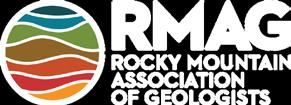








My path to geology was somewhat circuitous. In high school, I liked math and physics so chose to major in Civil Engineering at CU Boulder. There I took my first geology class, which focused on fractures and joints important to engineers when building dams and drilling tunnels. Geology didn’t make a big impression on me, though, until my MS (Geological Engineering, Michigan Tech) where I was exposed to geology in a way that changed my thinking and career path.
My MS research project was to match my numerical model to a PhD student’s column experiments testing the removal of contaminants from groundwater using airflow (air sparging). No matter what I did, I couldn’t get a match. The physics were right, but I was assuming homogeneous strata whereas heterogeneity caused airflow pathway fingering. At the time, geostatistics was a growing field and I became curious about adding heterogeneity into the models. This led me into a post-MS job in geostatistics.
At that point, two formative experiences moved me closer to geology. I took classes at CSM to help build my foundation as a geo-engineer/scientist. In 2000 I took John Warme’s applied stratigraphy class and was invited to attend the ExxonMobil recruiting field trip to the Guadalupe mountains. Through these two experiences, I began to love geology, deepwater sedimentology in particular. I felt I had found the missing piece, but it took me a while to convert due to my engineering training I struggled with translating words into numbers; the qualitative, observational, and language-based nature of geology was a
steep hill to climb. During my PhD I was able to find the sweet spot between engineering and geology, and haven’t turned back.
My first science-related job, and the best one to tell people about at parties, was at the USGS National Water Quality Laboratory, working in the organics lab, prepping fish and small animal samples to be tested for bioaccumulation of organic contaminants. This is where I decided I wasn’t going to work in an analytical facility. My first geology-related job was wellsite remediation of gas wellheads on the Western Slope of Colorado – wells coincidentally that my father drilled as a Petroleum Engineer back in the 80’s.
I have worked as a programmer, UNIX and MS Windows system administrator, laboratory technician, industry software trainer, technical software
RMAG’s Diversity and Inclusion Committee is featuring a monthly Member Corner. We hope you’ll enjoy learning about the diverse community of Earth scientists and wide variety of geoscience disciplines that comprise our membership. If you would like to appear in an upcoming column, or if there is someone you would like to nominate, please contact staff@rmag.org
salesperson and consultant, environmental engineer, and petroleum engineer. I often tell undergraduate students it’s a misperception that your degree is point A on the map and there is a straight line to point B, which will be your happily-ever-after job. I bounced in and out of school, always drawn back due to a love of learning and a feeling that I never knew enough. My many different jobs have all taught me something about myself, my strengths, my likes/ dislikes, what energized me, and what was difficult for me.
I am a professor in the Geosciences Department at Colorado State University. A large portion of my job is teaching, including an intro-level, non-majors class called Geologic Natural Resources. My petroleum-related courses (Petroleum Geology, Petroleum Reservoir Characterization, and Well Logging and Petrophysics) were under subscribed, so this year I took a teaching sabbatical to modify them. One example is Reservoir Characterization and Modeling that I revised to include all subsurface reservoirs: petroleum, groundwater, geothermal, and CO2 sequestration. I also enjoy teaching data analytics to students who are just learning statistics, computers, software tools, and programming.

The other part of my job is doing research. I enjoy bridging the gap between engineering and science. I focus specifically on building reservoir models that mimic sedimentology to better understand its impact on reservoir performance. I am a co-PI of a research project in Chile, using qualitative and quantitative analysis of sedimentary processes and products from world-class outcrops to improve reservoir predictions and test reservoir performance. My most recent project with CSS has been the development of a web-hosted relational database of 1000’s of meters of measured sections from the Magallanes Basin in Chile, to quantitatively answer questions on how deep-water sedimentary architecture varies with scale and slope position.
One of the best career lessons I’ve learned is that some of my personality traits, which I often label as negative, have some very strong positive impacts in the workplace. I discovered this from the
Clifton Strengths Finder Test I took when starting at CSU. I was amazed to learn that my top strength is something I never would have labeled a strength. The reframing helped me to bring my whole self into my workplace and to grow that strength in a way that helped me connect with my co-workers and students.
No matter what you do, always work to build your toolbox of transferrable skills. Be flexible and adaptable. When you don’t know the answer, find an expert and ask them lots of well-formed questions. Well-formed questions show intelligence, rather than lack thereof. Be curious. Figure out what is most important to you in life, what you value, and find a career/job that is a good fit for you. The person who talks the most to you is you, so foster a voice of compassion and support.

Confidence and imposter syndrome. I often feel in my career I’m stuck in no-man’s land. For example, when completing my PhD in an interdisciplinary project in engineering, geology, and geophysics, the engineering industry recruiters told me I needed to talk to the G&G recruiters and the G&G recruiters would then send me back. I always have been curious and sought out pieces of the puzzle across disciplines, but it does make me feel like a jack of all trades and master of none. I learned, though, to find and develop my unique contribution to the world and find a way to communicate and materialize that contribution. I still struggle to feel like I fit in a Geosciences department (without ever having taken a single minerology class!), but I try to remember my strengths and my contributions.
The current group of undergraduate students inspires me. I’ve heard this generation called, among other things, “The mental health generation”. I observe students openly and willingly talking about mental health issues, either their own or someone close to them. While working to figure it all out, they are tackling one of the biggest problems that our society faces, and I’m excited to see what they do with the self- and other-knowledge that they gain in the process. These students are leaps and bounds more self-aware than I was at their age and I encourage and support them to continue on their journey.
That’s a tough one. As a full-time single parent, I struggle to find the balance. For me, family comes first, although I’m also driven to go above and beyond in my career. I’ve learned to set good boundaries with work, examine my values and live by them, and be honest with my co-workers about where I am. We all are trying to figure out how to do our best in life, and we all do it imperfectly. Two of the best pieces of advice that I‘ve gotten are: 1) make the job work for you, or find another job, and 2) all careers
have phases and it’s ok to accept periods of rapid growth or, on the flipside, stagnation.
I have two dogs and a cat. While getting my PhD, I trained my oldest dog, Jasper (13-year-old Labrador retriever) to be a search and rescue dog through the California Rescue Dog Association. When he was about to be certified, I became pregnant with twins. So, he’s the best-trained house pet anyone could ever ask for. We now have a female black lab that my girls lovingly named Coconut (because she is crazy!).
Vietnam, Thailand, and Indonesia. Plus, anywhere with my girls even if I’ve been there before. It’s so much fun to see things through their eyes.
My friends and family tell me that I should have been a therapist rather than a geoscientist.
I just taught my daughters to play chess. I played it as a kid, but have learned to love it as an adult.
P a l e o z o i c I m p a c t
C r a t e r F i e l d
J u n e 2 4 - 2 5 , 2 0 2 3


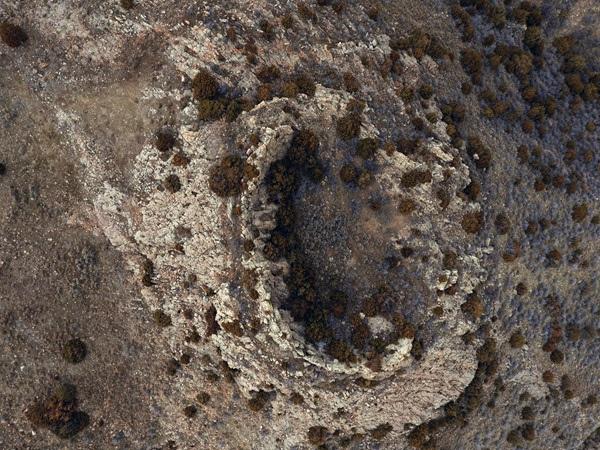
D o u g l a s , W y o m i n g
S e e m o r e i m p a c t c r a t e r s
t h a n a n y w h e r e e l s e o n
E a r t h ! D o n ' t m i s s t h i s
u n i q u e f i e l d t r i p l e d b y D r .
K e n t S u n d e l l .



The RMAG Foundation participated in the Special Awards Judging at the Colorado Science and Engineering Fair in Fort Collins on April 13. The RMAG Foundation awarded two Junior Division and two Senior Division awards for Excellence in Earth Sciences. RMAG members Anna Phelps, Laura Wray, and JoDana Swanson judged on behalf of the RMAG Foundation.

• Sylvia Daugherty: Fuels of the Future (awarded $200)
• Wilson Moyer: Applying Machine Learning to
• Siena Parr and Samantha Abate: Radon in Rural Colorado: The Not so Noble Gas (award $200)

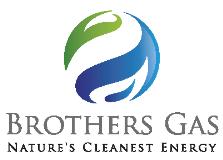

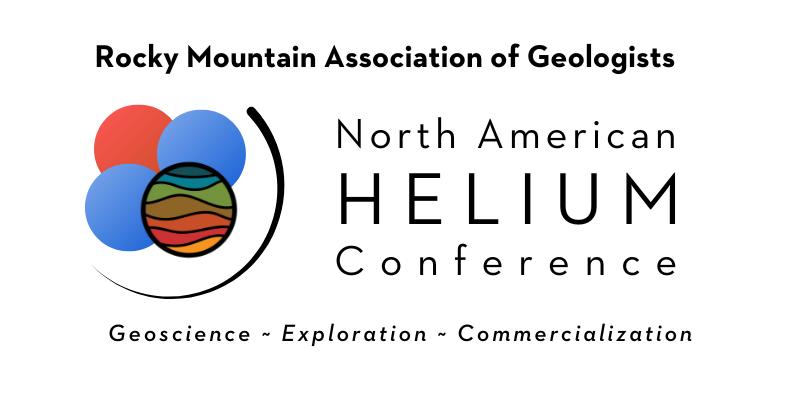









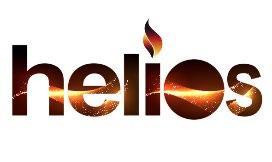



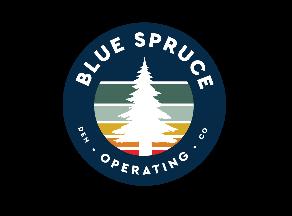



This year’s On the Rocks: Behind the Scenes Tour of the Denver Museum of Nature and Science was held on March 11th and it did not disappoint. Let me just say, if you missed this event, don’t miss the next time. Dr. James Hagadorn and Dr. Gussie Maccracken led two groups of attendees behind the scenes throughout the museum for 90 minutes. This happens to be one of RMAG’s events that older kids can join in on and it was great to see those that brought their families. My group started Stop 1 with Gussie in the Annex fossil storage room where many of the large vertebrate fossils are held in plaster casts weighing well over 500 pounds. This area also houses multiple paleobotany samples and particularly fossils of leaves from Grand Staircase-Escalante (Photos 1-3). Gussie described how her work as a paleobotanist always starts with a question or questions that she hopes can be answered such as what was happening during a particular time in geologic history. That leads to asking where the best place is to answer that question. Her paleobotany work particularly has led to Corral Bluffs, east of Colorado Springs, to investigate the Cretaceous to Paleogene plant fossils that emerged after the mass extinction at the end of the Cretaceous. The tight stratigraphic control here allows for precision dating of fossils that has led to an understanding of the animal-climate interactions about 1 million years after the mass extinction. For example, as the climate warmed, teeth around the margins of leaves developed. These warming events resulted in a massive increase in mammal and plant species and populations and a specialization in diets.
Stop 2 took us to one of three fossil prep labs. One of the larger fossils being processed was on display through a window for museum goers to view. (Photo 4). If while processing, the fossils need to be glued together, they go into a large, garnet sand box to



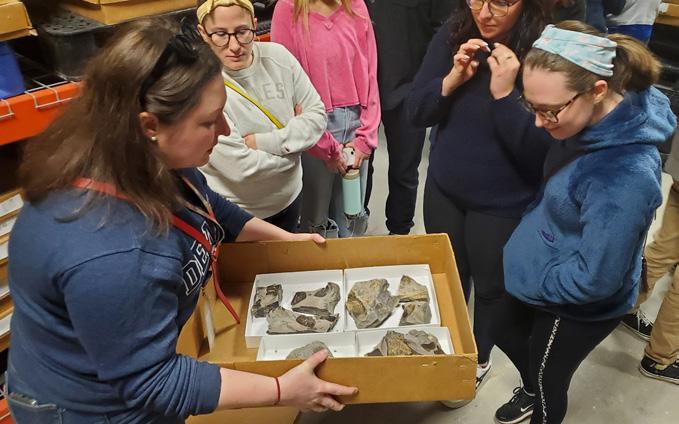
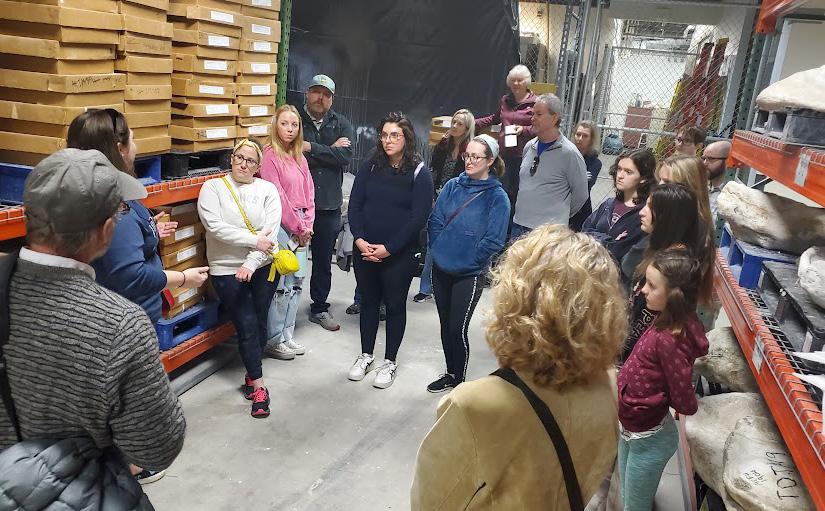

» CONTINUED FROM PAGE 28
maintain their position while the glue cures so if you want to process fossils and play in a sand box, sign up to volunteer. Gussie explained how important and how far the ventilation systems have come over the years to prevent silicosis for those working on the fossils (Photo 5). If you ever wanted to know your cuts of meat on a Parasirloinus, see Photo 6. Since this space is tight and loud from all the dental and processing tools, and the ventilation system, we didn’t spend long here.
Stop 3 was my personal favorite – the Avenir Collections Center. It houses over 4 million objects and was renovated in 2014. Most of the museum’s objects are housed here and there are options to loan objects to other institutions. Specifically for paleobotany, there are 97,000 specimens with approximately half being cataloged with a specimen number. (Photos 7 & 8) One of the favorite specimens on display was the Madagascar short nosed crocodile, the Simosuchus (Photo 9). We then transitioned to where the vertebrates and plants are organized by time in massive sliding cases. Some specimens are displayed outside of the cases such as the 80 Ma fish that was found in 1967 in Snowmass in the ‘death’ pose (as animals die, their muscles contract and they are preserved in a contracted state) (Photo 10). We then got

to see local fossils of Snowmass mastodons and mammoths uncovered in Snowmass in 2010 (Photo 11). PBS did a special on the discovery of these fossils in 2012. Gussie and James switched groups here and James asked the group where we wanted to go. What would a group of geologists want to see… all the fabulous behind the scenes mineral and gemstone samples! (Photos 12-14) Many of these samples are donated to the museum and some are found by the museum. When it comes to diamonds, the museum has the second largest collection after the Mineralogic Association of America. I’m certain my daughter has no idea she’s holding thousands of dollars’ worth of diamonds in her hands (Photo 15). Other fantastic specimens included a kimberlite with a raw diamond in it, Colorado’s state mineral, Rhodochrosite, and watermelon tourmaline (Photos 16 & 17). At the conclusion of the mineral room, our groups met up at the gift shop and could explore from there. Thank you to Cam Uribe and Laura Wray for coordinating this event, the participants for joining, and to RMAG for donating half of the cost to the museum. Special thanks to Dr. James Hagadorn and Dr. Gussie Maccracken for guiding the groups. If you’re interested in searching through the museum’s collections, go here If you missed this event, make sure you join the next time!

10: 80 Ma fish fossil discovered in 1967 in Colorado (Photo credit – Laura Wray)


11: Mastodon and Mammoth fossils discovered in Snowmass during the expansion of the reservoir
12: Dr. James Hagadorn discussing the mineral Specimens with the group.


13: Close-up of mineral specimens

14: Close-up of the arsenic mineral orpiment
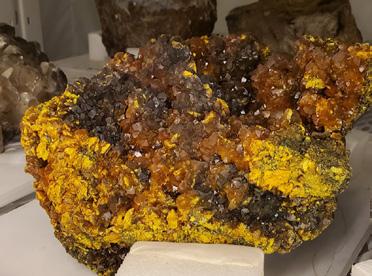
15: Raw diamonds held by Evelyn Wolff

16: Kimberlite with diamond in the center
17: Watermelon Tourmaline crystals
(Photo credit – Laura Wray)


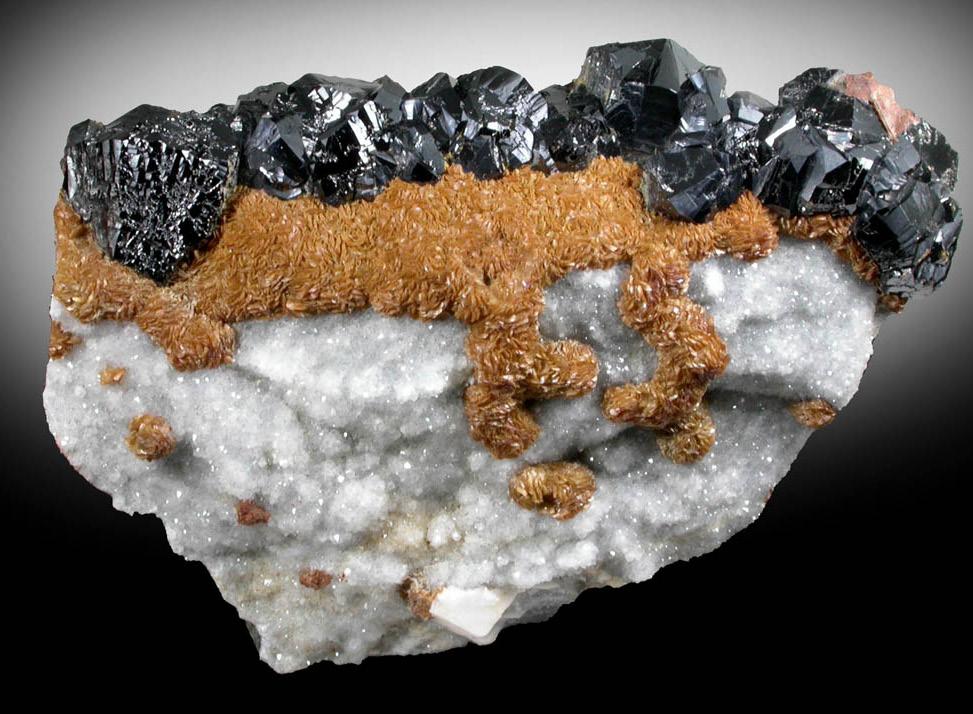
» CONTINUED ON PAGE 33
Lustrous black sphalerite crystals atop bladed brown siderite crystals on a quartzcoated matrix. Smallcleugh Mine, Nenthead, Alston Moor, Cumbria, England. 10 cm in long dimension. Used with permission from John Betts Fine Minerals, Inc.Sphalerite, ZnS, is a the most significant ore of zinc. It is one of the most common sulfide minerals and it is found worldwide in a variety of hydrothermal, ore-forming environments. It is often found in association with other ore sulfides like galena, chalcopyrite and pyrrhotite. Sphalerite properties often vary with the degree of Fe substitution which is proportional to temperature of crystallization. Under certain conditions, the Fe/Zr ratio in sphalerite can be used as a paleothermometer. Sphalerite oxidizes to form other zinc minerals such as smithsonite, willemite and hemimorphite. Several of the impurities found in sphalerite (Cd, In, Ga, Ge) are extracted from it. Sphalerite is cubic (isometric) and it often appears as dodecahedral, tetrahedral or cubic crystals, often as twins. Sphalerite is a prized mineral collector’s item and good crystals are readily available at reasonable cost.
Sphalerite was named in 1846 by Ernst Friedrich Glocker (who also named 8 other minerals including halite). The name derives from the Greek sphaleros meaning ‘treacherous’- referring to the tendency of sphalerite to appear in many forms that can be easily mistaken for other minerals (Bonewitz, 2008). In particular, some examples of sphalerite closely resemble galena. Sphalerite is also known by other names such as blende, zinc blende, ruby zinc, ruby blende, mock lead, false galena and black-jack (Schneider, 2006). Blende is the German word for “blind”, a name hinting at the paucity of lead in some darker varieties of sphalerite that mimic galena.
Sphalerite is isometric with a high symmetry belonging to the bar43m (hextetrahedral) crystal class. The cubic structure of sphalerite is like that of diamond, where one half of the carbon atoms are replaced by Zn; the other half by S (Klein and Philpotts, 2013). Sphalerite has a hardness of 3.5 to 4 and a specific gravity between 3.9 to 4.1 (increasing with Fe content). Sphalerite appears in a wide variety of colors including yellow, brown, red, green, black, gray, white or colorless. Coloration darkens with increasing content of Fe, Mn or Cd. The lighter colored specimens of sphalerite typically have the lowest Fe contents – pure ZnS can be colorless (Klein
» CONTINUED ON PAGE 34
Cluster of translucent yellow-green sphalerite crystals. From the Bachelor Mine, Creede District, Mineral County, Colorado. Used with permission from John Betts Fine Minerals, Inc.
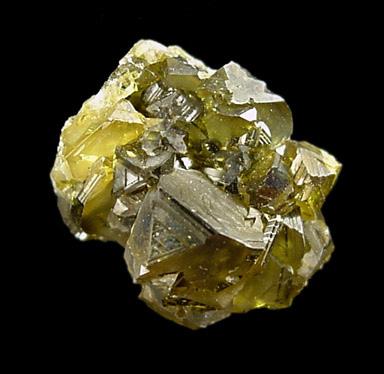
Transparent orange-brown sphalerite crystal, ZCA Hyatt Mine, Talcville, St. Lawrence, County, New York. 7mm in long dimension. Used with permission from John Betts Fine Minerals, Inc.
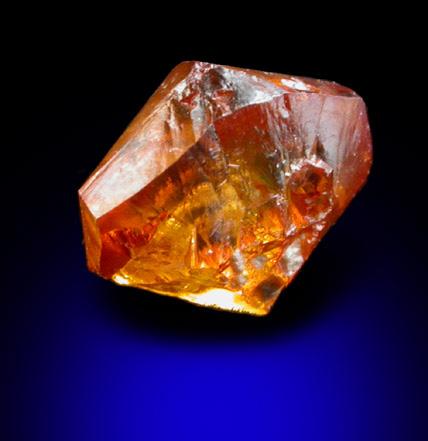
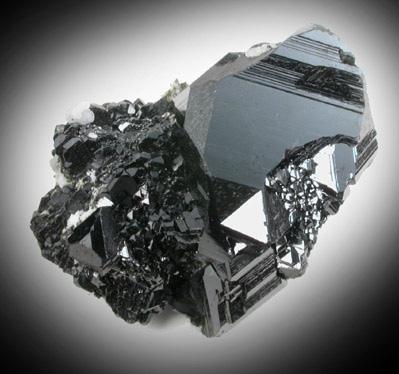
and Philpotts, 2013). Sphalerite sports a resinous, sub-adamantine to greasy-metallic luster. Increasing Fe content pushes the luster designation toward the metallic end of the spectrum. Sphalerite has a yellow to light brown streak, with darker streak color reflecting increasing Fe. Among the most unusual - and diagnostic - physical properties of sphalerite is its perfect dodecahedral cleavage on {110}. That is 6 perfect cleavage directions! (Try to name another mineral with 6 cleavages)!
Most sphalerites have some substitution of Fe2+ for Zn2+. The degree of this substitution is dependent on the amount of Fe2+ available and the temperature at crystallization (Higher T = more Fe2+). When sphalerite has grown alongside Fe-rich minerals like pyrrhotite, the Fe/Zn ration can be used as a paleothermometer to calculate crystallization temperature (Johnsen, 2002). Sphalerite has many other common impurities including Mn, Cd, Hg, In, Tl, Ga, Ge, Sb, Sn, Pb, Ag and Co (Mindat, 2023).
Some sphalerites fluoresce, depending on the presence of trace activators. In Franklin, New Jersey, trace silver yields sphalerite with blue fluorescence; manganese makes it fluoresce orange. Sphalerite fluorescence from other localities include the colors, golden, pink, yellow-orange, red-orange, green and yellow (Schneider, 2006). Fluorescent sphalerite often displays phosphorescence and some sphalerites are even triboluminescent, yielding orange flashes of light when the mineral is scratched with steel or when it is crushed. (Try your own triboluminescence experiment by crushing a wintergreen lifesaver candy with your teeth – in the dark. Or check out the ‘Lifesaver Lightning’ web link). Most sphalerite, however, is not fluorescent, phosphorescent or triboluminescent (Schneider, 2006).
Sphalerite shares occurrence and mode of origin with galena, with which it is commonly found. One of the most important types of Pb-Zn deposits are formed by basin hydrothermal systems expelling
» CONTINUED ON PAGE 36

Lustrous, transparent, gem-grade, yellow to red-brown sphalerite. Empire State Zinc Mine

#4 Balmat, St. Lawrence County, New York. 19 mm in maximum dimension. Used with permission from John Betts Fine Minerals, Inc.
Lustrous transparent dark red-brown sphalerite crystals, Tri-State LeadZinc Mining District, Joplin, Jasper County, Missouri. 6 cm in long dimension. Used with permission from John Betts Fine Minerals, Inc.

Sparkly dark-brown sphalerite crystals from the Telluride District, San Miguel County, Colorado. 8 cm in long dimension. Used with permission from John Betts Fine Minerals, Inc.

metal-laden fluids. This Pb-Zn enrichment is known as a Mississippi Valley-type (or, MVT) deposit because it was 1st discovered in the midcontinental US - the Tristates District of Missouri, Kansas and Oklahoma. MVT deposits are carbonate-hosted, stratabound accumulations of Pb-Zn minerals that were emplaced by flow of hot, saline, basinal brines expelled by vertical compaction and lateral tectonic compression (so-called “squeegee tectonics”). The close association of MVT deposits with oil and gas accumulations reflects their similar origins (Domenico and Schwartz, 1990). Other sphalerite occurrences include skarns, volcanogenic massive sulfides, hydrothermal vein systems and sedimentary exhalative deposits (Cook, 2003). Sphalerite has also been noted as a rare occurrence in meteorites and moon rocks (Bonewitz, 2008).
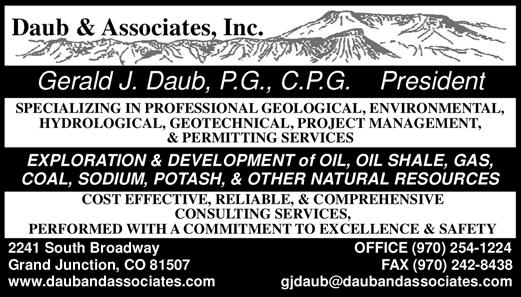
Sphalerite has many mineral associations including galena, pyrite, marcasite, chalcopyrite, calcite, dolomite, pyrrhotite, siderite, magnetite, fluorite, rhodochrosite, barite, tetrahedrite, huebnerite, quartz and many other hydrothermal minerals (Johnsen, 2002).
Sphalerite is the principal mineral ore for Zn and it has been exploited by the human family for many millennia. Among the oldest uses of zinc is as an alloying agent with copper to make brass (Klein, 2002). Miners in India were able to extract zinc for brassmaking by 1,000 BCE (Rooney, 2019). Brass, in antiquity, was used to make ornaments, weapons, coins and containers – just like today (Chaline, 2012). Zinc has a myriad of uses in the modern world. A thin coating of zinc is sufficient to form a
galvanizing barrier between iron and steel and the air. Zinc has a low reactivity because it resides at the end of the Period 4 transition metals – it prefers to hold on to the electrons in its full 4s and 3d subshells. This low reactivity makes it a good material for preventing rust (Still, 2016). Galvanized steel is essential for power transmission towers, storage tanks, culverts, nails and…automobiles. Other applications of zinc include: batteries; sacrificial anodes to protect ships, drilling platforms and submerged pipelines from corrosion; phosphors for TV tubes and fluorescent lamps; cosmetics; plastics; wood preservatives, paint, dyes and printing inks; catalysts for rubber manufacture, and pharmaceuticals (Kesler, 1994). Zinc is an essential nutrient – the opposite of its close friend, lead - and Zn dietary deficiency is associated with many diseases (Klein and Philpotts, 2013).
Surprisingly, sphalerite is also important because it is one of the most significant sources of other critical elements including cadmium, indium, gallium and germanium (Kesler, 1994; Klein, 2002).
Because sphalerite has a tendency to occur as well-crystallized masses and it is so widespread, it is usually easy to obtain for nominal prices. Mineral enthusiasts have been happily collecting desirable

sphalerite specimens for centuries (Muntyan, 1999). Translucent varieties of sphalerites have sometimes been cut into gems, although this is a difficult procedure because sphalerite is soft and it readily cleaves (Bonewitz, 2008).
Sphalerite is known from worldwide occurrence. Notable sphalerite localities include Bolivia, Peru, Bulgaria, Spain, the Northwest Territories, Germany, Poland and many localities in Mexico, Germany, England, and Russia. In the United States, sphalerites are collected from the Tri-States District of Missouri, Oklahoma and Kansas, Tennessee, Niagara and St. Lawrence Counties, New York, Sussex County, New Jersey, Berks and York Counties, Pennsylvania and many localities in Arizona, Colorado, Idaho and Montana (Cook, 2003).

WEB LINKS
• https://www.minerals.net/mineral/sphalerite.
aspx
• https://en.wikipedia.org/wiki/Sphalerite
• https://www.mindat.org/min-3727.html
• https://rruff.info/doclib/hom/sphalerite.pdf
• https://www.webmineral.com/data/Sphalerite.
shtml
• https://www.usgs.gov/media/images/sphalerite
• https://www.thrillist.com/news/nation/wintergreen-lifesavers-blue-light-triboluminescence-slow-motion-video
Bonewitz, Ronald Louis, 2008, Rock and Gem: The Definitive Guide to Rocks, Minerals, Gems and Fossils, New York, New York: Dorling-Kindersley Limited, 360 pp.
Chaline, Eric, 2012, Zinc, in Fifty Minerals that Changed the Course of History, Buffalo, NY: Firefly Books, Inc., pp. 216-217.
Cook, Robert B., 2003, Connoisseur’s Choice: Sphalerite, Eagle Mine, Gilman Eagle County, Colorado, Rocks & Minerals, 78(5): 330-334.
Domenico, Patrick A. and Franklin W. Schwartz, Physical and Chemical Hydrogeology, New York, NY: John Wiley & Sons, Inc., 506 pp.
Highly lustrous spinel law twinned sphalerite crystals with calcite and quartz. Stanterg Mine, Trepca District, NE of Kosozska Mitrovica, Kosovo. 5.5 cm in long dimension. Used with permission from John Betts Fine Minerals, Inc.
Johnsen, Ole, 2002, Minerals of the World: Princeton University Press, Princeton, N.J. 439 pp.
Kesler, Stephen A., 1994, Mineral Resources, Economics and the Environment, New York: MacMillan College Publishing Company, Inc., 391 pp.
Klein, Cornelis, 2002, The 22 nd Edition of the Manual of Mineral Science: New York, John Wiley & Sons, Inc., 641 pp.
Klein, Cornelis, and Anthony Philpotts, 2013, Earth Materials: Introduction to Mineralogy and Petrology, Cambridge University Press, 536 pp.
Muntyan, Barbara, 1999, Colorado Sphalerite, Rocks & Minerals, 74(4): 220-235.
Rooney, Anne, 2019, How the World Works – The Periodic Table: From Hydrogen to Oganesson, London, England: SiriusPublishing, 208 pp.
Schneider, Stuart L., 2006, The World of Fluorescent Minerals, Atglen, PA: Schiffer Publishing LTD., 192 pp.
Still, Ben, 2016, Zinc: Unappreciated and Understated, in The Secret Life of the Periodic Table –Unlocking the Mysteries of all 118 Elements, Buffalo, N.Y.: Firefly Books, Inc, pp. 70-71.
RMAG’s Educational Outreach committee wants to create a collection of Colorado rocks that can be paired with the Colorado geological map. The committee will use these rocks as an educational tool to teach elementary, middle, and high school students about the geology of Colorado, geological processes, and Colorado mineral resources.

While you are on your summer vacations to the many wonderful areas in Colorado, please consider picking up rocks for our collection. We ask you note where you collected the rocks and the formation name. ROCKD is a great app that uses your location and geological maps to “map” the formation under your feet. Keep in mind to collect rocks where it is allowed.
Some examples of rocks from formations that we would love in our collection:
• Maroon
• Leadville
• Chinle
• Green River
• Navajo/Nugget
• Entrada
• Lodore
• Dakota
• Sawatch
• Igneous and Metamorphic rocks
• Wasatch
• Volcanics (San Juan – Flat Tops)
When your rocks are ready, contact us at edoutreach@rmag.org
Thank you!
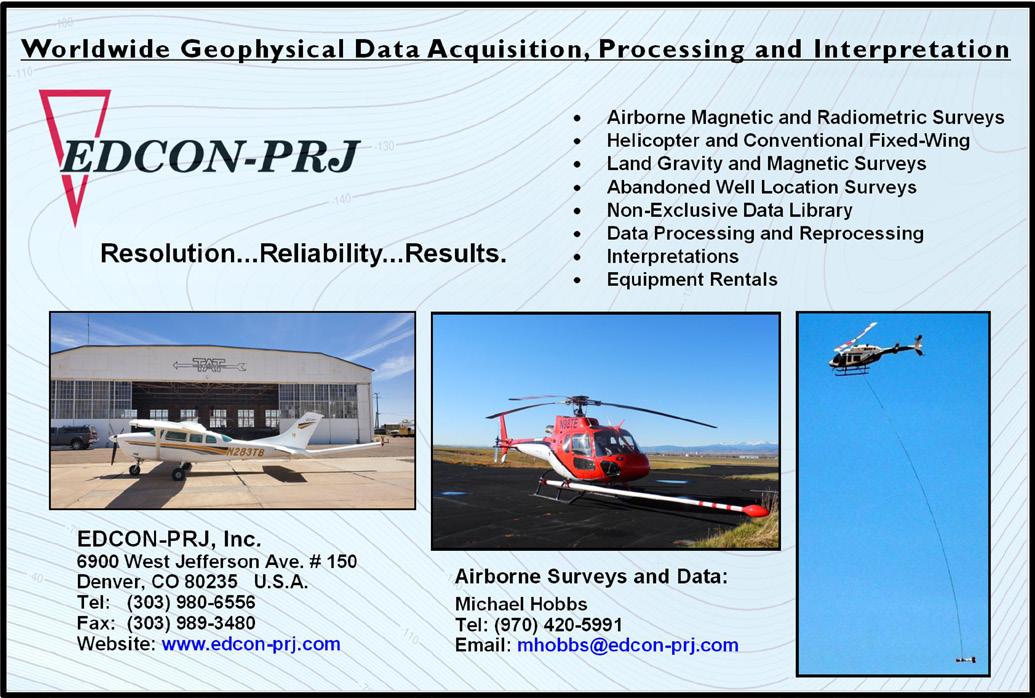

Kirk Barrell the President at Amelia Resources, LLC in Denver, Colorado.
Nathan Campbell is a Geophysicist at EDCON-PRJ, Inc. in Denver, Colorado.
Bill Carver lives in Durango, Colorado.
Yashwanth Chitrala is a Petrophysicist at BPX in Denver, Colorado.
Clayton Cummings is a Partner at Johnson Rice & Company, LLC and lives in New Orleans, Louisiana.
Lisa DAmbrosia works for Aspect Holdings in Littleton, Colorado.
Matthew Dahan is an SVP of Business Development and Technology in Plano, Texas.
Michael Hobbs is the Vice President of Operations at EDCON-PRJ, Inc. in Denver, Colorado.
Bridget Hundley lives in Centennial, Colorado.
Jeffrey Jennings is the President at Harris, Brown & Klemer, Inc. in Bismarck, North Dakota.
Kelly Keeling is a Geophysicist in Broomfield, Colorado.
Codie Kretzer is a Geologist at Equinor in Austin, Texas.
Cody Meyer is the President of Rebco Oil in Desdemona, Texas.
Matt Morgan is the Director and State Geologist at the Colorado Geological Survey in Golden, Colorado.
Todd Peters lives in Louisville, Colorado.
James Post lives in Towanda, Pennsylvania.
Stuart Rolph works at GennX in Houston, Texas.
Ryan Walter is an Operations Manager at Zephyr Energy in Brighton, Colorado.



MAY 2, 2023
RMAG Women’s Group Coffee.
DERL- 730 17th Street, B-1. 10 AM-11 AM.
MAY 3, 2023
RMAG Luncheon. Speaker: Ken Balleweg. “
Paleokarst Origin & Mining History of the Beulah Marble Deposit.” Online or In-person

at Maggiano’s, Denver. 12:00 PM-1:00 PM.
MAY 4, 2023
DPC. Speaker Series: Carbon Capture.
MAY 12, 2023
DPC Crawfish Boil. 3:00-8:00 PM. City Park Pavilion.
MAY 16, 2023
DWLS Luncheon. TBA.
MAY 18, 2023
RMS-SEPM Geology Brewery Rendezvous.
5:00-7:00 PM. Empourium Brewing Company.


Why contribute?
Expanded geologic focus:
Why contribute?
• Reach
• Quarterly
• Permanent
Expanded geologic focus: Entire greater Rocky Mountain West Texas and New Mexico -Continent

Expanded geologic focus:
• Entire greater Rocky Mountain area of North America
• Quick
• Every
• West Texas and New Mexico to northern British Columbia
• Entire greater Rocky Mountain area of North America
• Reach a broad industry and academic audience
• Great Plains and Mid-Continent region
• West Texas and New Mexico to northern British Columbia
• Quarterly peer reviewed journal
• Great Plains and Mid-Continent region Why contribute?
• Reach a broad industry and academic audience
• Permanent archiving includes AAPG Datapages
• Quarterly peer-reviewed journal
• Quick turn around time
https://www.rmag.org/publications/the
• Permanent archiving includes AAPG Datapages
• Every subdiscipline in the geosciences
• Quick turn-around time
https://www.rmag.org/publications/the
• Every subdiscipline in the geosciences
Expanded geologic focus:

area of North America
• Entire greater Rocky Mountain area of North America
northern British Columbia region
• West Texas and New Mexico to northern British Columbia
• Great Plains and Mid Continent region
Email: mgeditor@rmag.org
https://www.rmag.org/publications/the -mountain-geologist/
